Upload for Kenzar’s Fleet Reconnaisance Floatplane Challange
Lore: In 1931 the SP Navy was looking for a replacement for the antiquated NR-1F, and set out a set of specifications for a new modern Naval Recon Floatplane. The specifications were to reach 200 mph, have a service ceiling of 15,000 ft, have a fixed forward firing gun and a flexible rear gun, have capability to hold 500 lbs in ordinance, can use the current catapult on Battleships, Destroyers, Merchant ships, and Carriers, and able to loiter for 2 hours above a Naval battle. There were plenty of entries, but the XNR-4F, or Model FP-22 in SchArCo’s inventory, was by far the best option, and was adopted as the NR-4F in 1933. It had all the specifications required, and more, with having a rear turret for defense with two .30 caliber machine guns, a modern Long Range Radio, and a bomb bay with the capability to hold the Mk. 3 Small Diameter Torpedo, a 500 lb bomb, droppable life rafts, mines, or a large fuel tank for extended range and ferrying. The Rotertech R14 14 cylinder engine would propel it easily over the 200 mph request, and its single supercharger would allow it to easily go over the required service ceiling. It would be nicknamed the Petrel, after the seafaring bird, and was beloved by its crew. It would eventually be replace by the NR-8F in 1943 but would still be used in minor roles until 1946. The NR-4F would be used for multiple roles, including reconnaissance, artillery observation, Search and Rescue, small transportation, mine laying, and even coastal bombing runs. Due to the lack of combat engagements and high production numbers, plenty would survive today in museums and civilian sectors.
Activate Groups:
AG1: Fold Wings
AG2: Open Bomb Bay
AG3: Open Canopy/Turret Door
AG4: Activate Turret
AG5: Position Lights
AG6: Navigation Lights
Specifications
Spotlights
- This craft is curated
- Valiant2017 10 months ago
- Kenzar 10 months ago
General Characteristics
- Predecessor [CLOSED] Fleet Reconnissance Floatplane Challenge
- Created On iOS
- Wingspan 43.9ft (13.4m)
- Length 37.0ft (11.3m)
- Height 15.5ft (4.7m)
- Empty Weight 4,841lbs (2,195kg)
- Loaded Weight 7,344lbs (3,331kg)
Performance
- Horse Power/Weight Ratio 0.408
- Wing Loading 13.3lbs/ft2 (64.8kg/m2)
- Wing Area 553.0ft2 (51.4m2)
- Drag Points 6605
Parts
- Number of Parts 437
- Control Surfaces 14
- Performance Cost 1,656


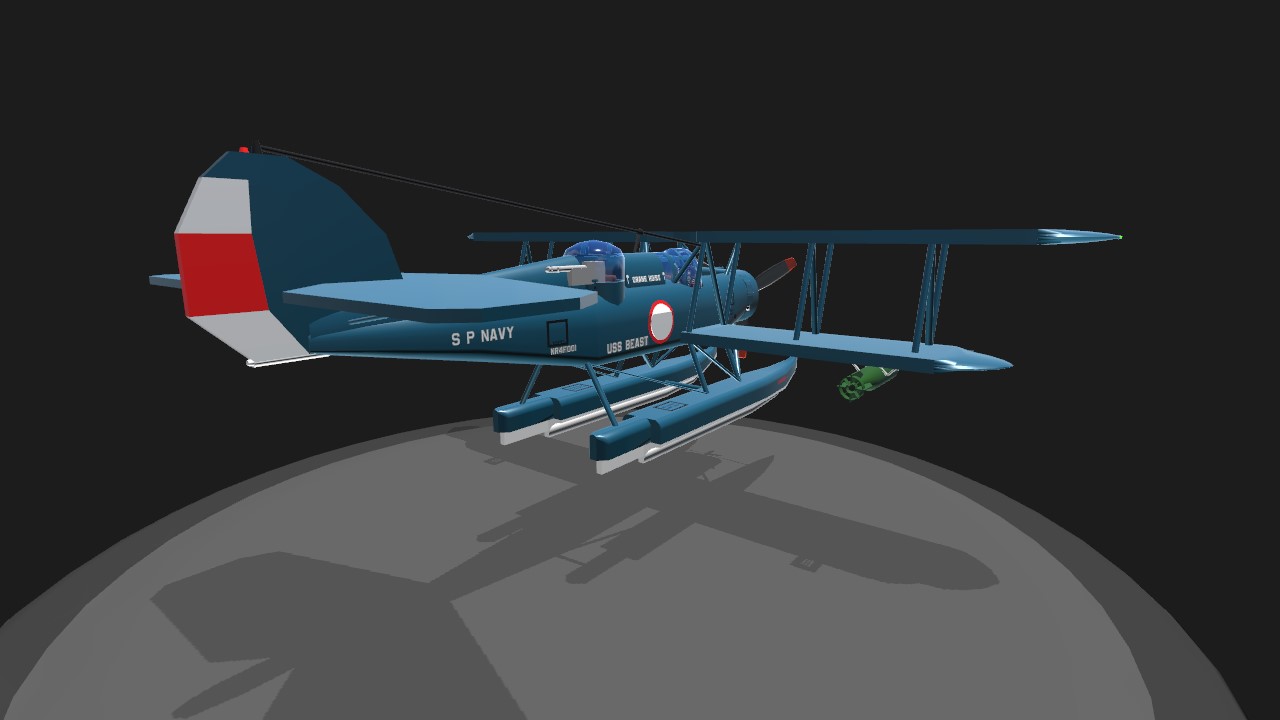
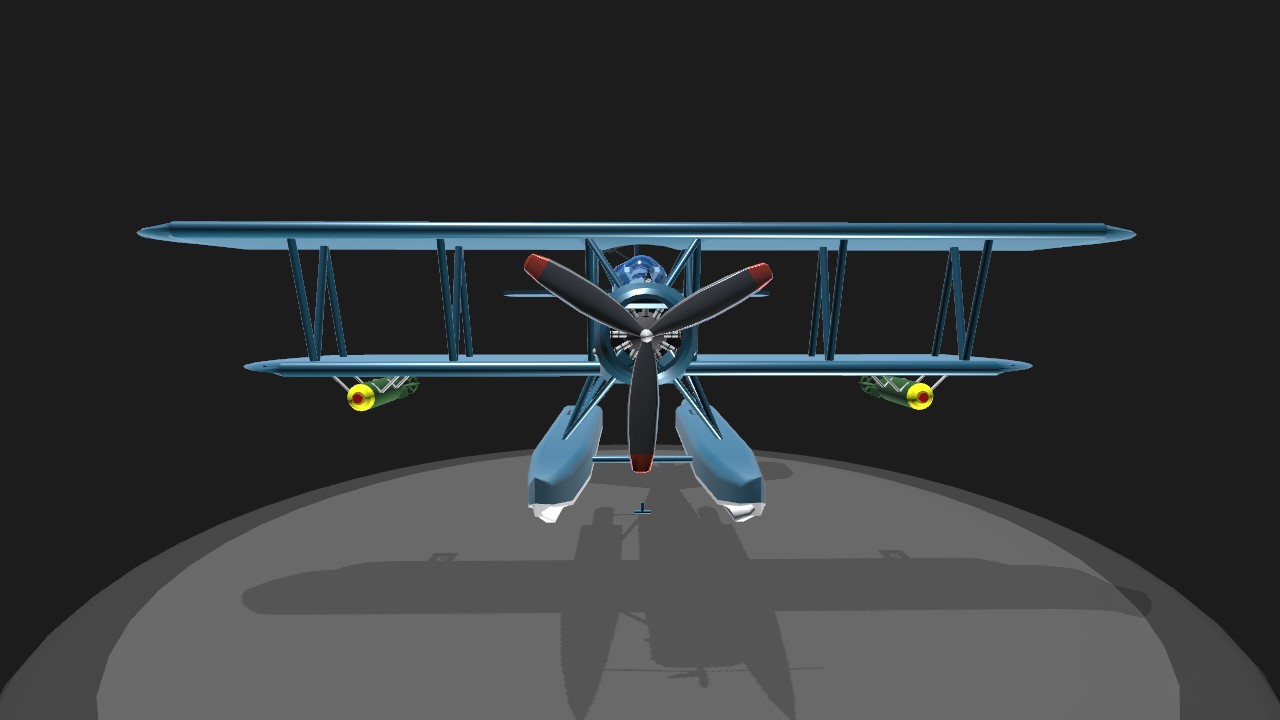
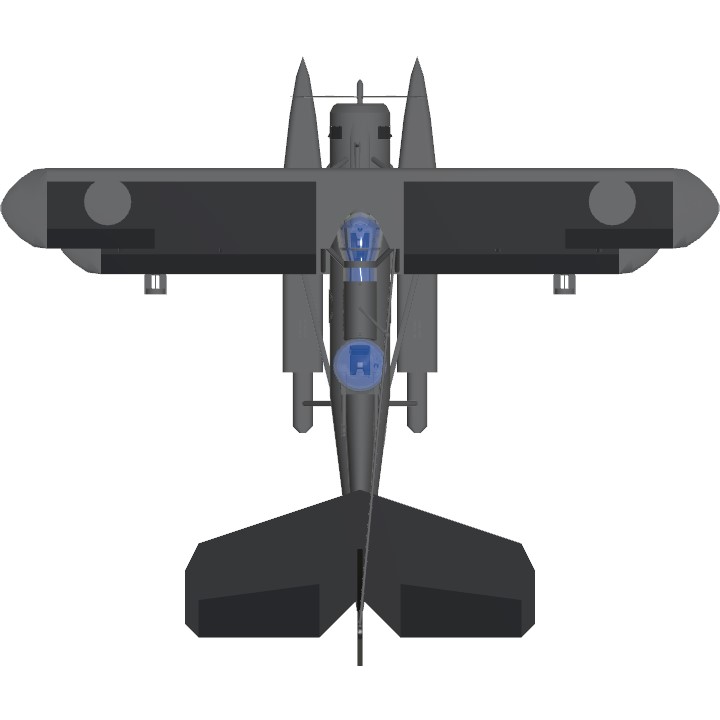
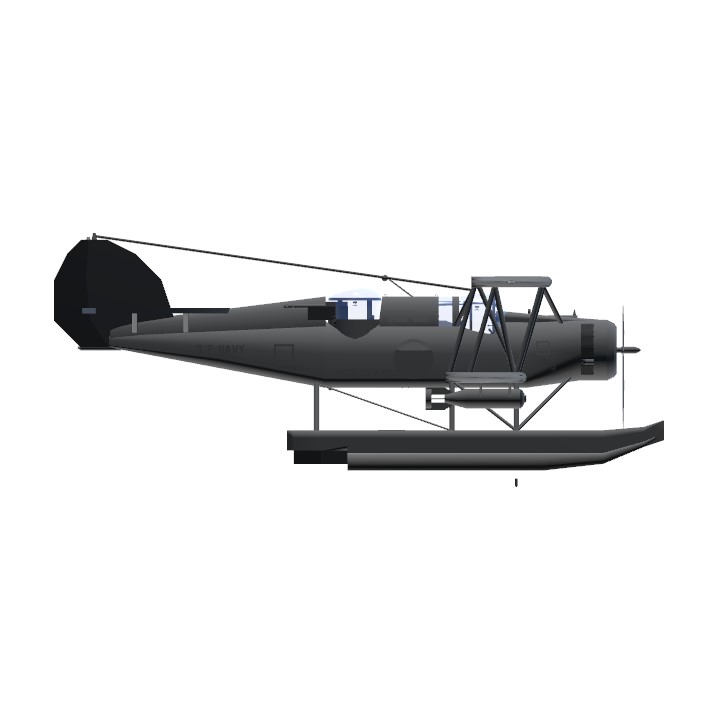
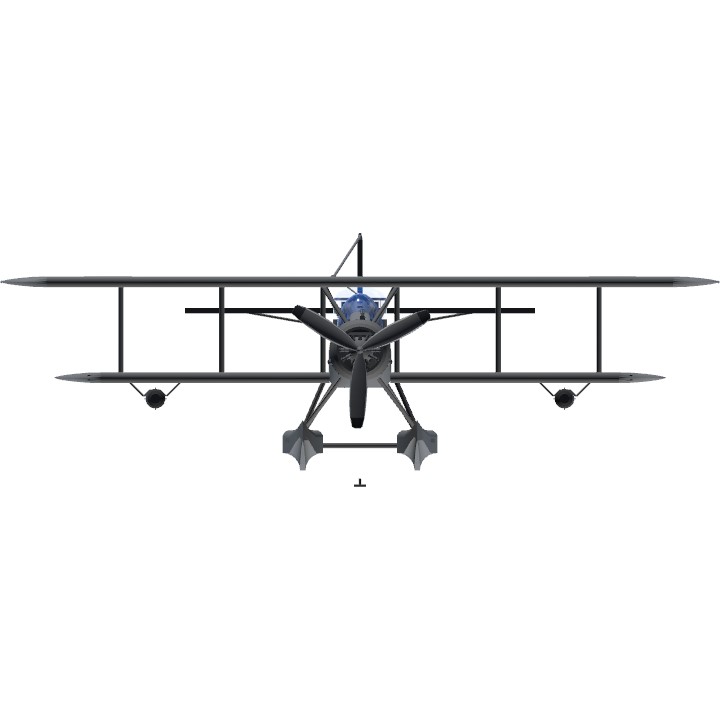
Ranking:
Looks: 18/20
Functionality: 20/20
Realism: 17/20
Detail: 7/10
Flight: 6/10
Interesting: 0/10
Do I like it: 10/10
Final: 78/100
Nice job!
Yeah I think I've been outplayed here! This thing is great, well armed, and flies pretty damn well
@Kenzar appreciate the rating, looks like there’s room for improvement, see if I have time to make another one
@Valiant2017 Constructive criticism is always welcome, but yeah the rear alignment of everything was basically so it could actually lift up from the water, took me a few days to actually get it to work haha. Then the turret sensitivity is because it keeps the camera centered, if it was lower the camera would be off centered the farther you go from center, it’s kinda a thing to get used to, but thank you for the feedback
I flew this seaplane for a bit. The plane is funny and quite interesting, but there are a few complaints. The first thing that spoiled the impression was the very rear alignment. The plane is too strict in control. The second thing I didn't like was the excessive rotation of the turret. As I understood it, the turret should rotate along with the camera rotation, but the rotation occurs after the camera stops. But the model is not bad.
I'm sorry if my words hurt you.